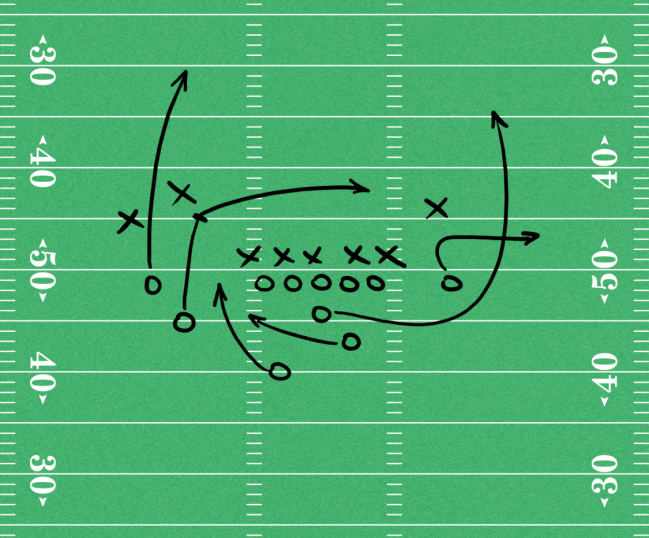Features

Majority of U.S. Law Firms Plan to Change Real Estate Footprint Over Next Two Years
Roughly 85% of U.S. law firms plan to change the size of their real estate portfolio over the next two years, with more than half expecting to add space and about a third planning to reduce it.
Features

LJN Quarterly Update: 2024 Q1
Highlights some of the in-depth analysis and insights from lawyers and other practice area experts from the nine LJN Newsletters titles over the first quarter of 2024.
Features

CRM Success: A Playbook for Disrupting Traditional CRM
Here's the playbook for disruption: Take attorneys out of the equation. Stop building CRM that succeeds or fails on their shoulders. We need to shift the focus and, instead, build the technology from the ground up for the professionals who actually use it: marketing and business development.
Features

How Law Firms are Reducing Redundant Real Estate by Bringing Onsite Support Services Back to the Office
The COVID-19 pandemic disrupted the industry in many ways, pushing law firms to rapidly adopt remote work solutions, digital transformation and cost cutting measures. While some adjustments proved effective, most industry leaders are prioritizing higher office attendance as a measure for future success.
Features

A Playbook for Disrupting Traditional CRM
Here's the playbook for disruption: Take attorneys out of the equation. Stop building CRM that succeeds or fails on their shoulders. We need to shift the focus and, instead, build the technology from the ground up for the professionals who actually use it: marketing and business development.
Features

What Your Clients Need to Know About Succession Planning
Business people are often confused about the differences between succession planning and exit planning. Attorneys are in the unique position of being able to guide their clients through the confusion.
Features

Improving Billing Security Improves Client Experience
Client service doesn't end before the invoice goes out. Every interaction is an opportunity for the firm to provide the best experience current knowledge and technology is able to deliver — and since security is a key component of what clients want, security needs to be part of that equation.
Features

Law Firms are Reducing Redundant Real Estate by Bringing Support Services Back to the Office
A trend analysis of the benefits and challenges of bringing back administrative, word processing and billing services to law offices.
Features

IRS Keeps Hold On Employee Retention Credit Claims to Protect Small Businesses from Fraud
While the IRS has new ERC claims on pause and works to investigate possible fraud, business owners still have the opportunity to protect themselves from potential civil and criminal penalties.
Features

Partner Pay Spread Increases for Top Law Firms Amid Partnership Model Changes
Amid unprecedented billing rate hikes and an escalation of the battle for rainmaking talent, Am Law 100 law firms again raised the stakes on partner pay last year. At the same time, the average spread among Second Hundred firms fell a bit.
Need Help?
- Prefer an IP authenticated environment? Request a transition or call 800-756-8993.
- Need other assistance? email Customer Service or call 1-877-256-2472.
MOST POPULAR STORIES
- The 'Sophisticated Insured' DefenseA majority of courts consider the <i>contra proferentem</i> doctrine to be a pillar of insurance law. The doctrine requires ambiguous terms in an insurance policy to be construed against the insurer and in favor of coverage for the insured. A prominent rationale behind the doctrine is that insurance policies are usually standard-form contracts drafted entirely by insurers.Read More ›
- A Lawyer's System for Active ReadingActive reading comprises many daily tasks lawyers engage in, including highlighting, annotating, note taking, comparing and searching texts. It demands more than flipping or turning pages.Read More ›
- The Brave New World of Cybersecurity Due Diligence in Mergers and Acquisitions: Pitfalls and OpportunitiesLike poorly-behaved school children, new technologies and intellectual property (IP) are increasingly disrupting the M&A establishment. Cybersecurity has become the latest disruptive newcomer to the M&A party.Read More ›
- Abandoned and Unused Cables: A Hidden Liability Under the 2002 National Electric CodeIn an effort to minimize the release of toxic gasses from cables in the event of fire, the 2002 version of the National Electric Code ("NEC"), promulgated by the National Fire Protection Association, sets forth new guidelines requiring that abandoned cables must be removed from buildings unless they are located in metal raceways or tagged "For Future Use." While the NEC is not, in itself, binding law, most jurisdictions in the United States adopt the NEC by reference in their state or local building and fire codes. Thus, noncompliance with the recent NEC guidelines will likely mean that a building is in violation of a building or fire code. If so, the building owner may also be in breach of agreements with tenants and lenders and may be jeopardizing its fire insurance coverage. Even in jurisdictions where the 2002 NEC has not been adopted, it may be argued that the guidelines represent the standard of reasonable care and could result in tort liability for the landlord if toxic gasses from abandoned cables are emitted in a fire. With these potential liabilities in mind, this article discusses: 1) how to address the abandoned wires and cables currently located within the risers, ceilings and other areas of properties, and 2) additional considerations in the placement and removal of telecommunications cables going forward.Read More ›
- Guidance on Distributions As 'Disbursements' and U.S. Trustee FeesIn a recent case from the Bankruptcy Court for the District of Delaware, In re Paragon Offshore PLC, the bankruptcy court provided guidance on whether a post-plan effective date litigation trust's distributions constituted disbursements subject to the U.S. Trustee fee "tax."Read More ›
